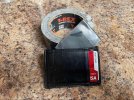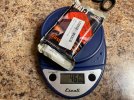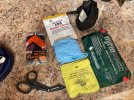- Joined
- May 19, 2007
- Messages
- 7,745
When it comes to alcho-gel as a fire starter there are a few factors. If its ethanol based or isopropyl, and what additives it has. Its best to try each first to ensure it will work, though my experience suggests that aloe is not helpful and ethanol is better. The gelling agent isn't always listed and may be a critical factor, I don't know for sure. So, better test. I'm not even sure that brands are consistent regionally, so someone else's tests may be invalid.





